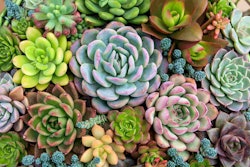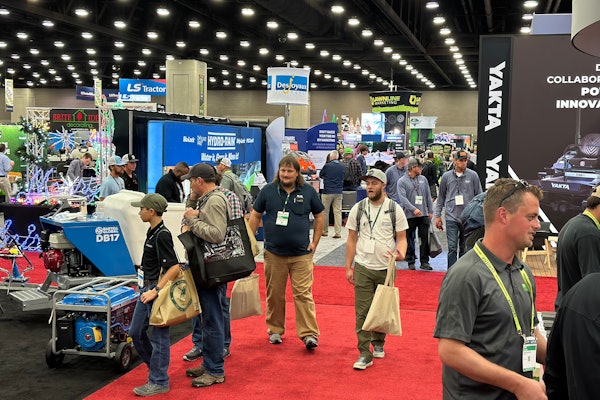 For companies beginning the process of leasing, it’s important to start the process off with a trusted advisor to determine the right type of financing for your business.
For companies beginning the process of leasing, it’s important to start the process off with a trusted advisor to determine the right type of financing for your business. Photo: John Deere
Want to download the entire Mower Matchup series, including makes, models and details on dozens of mowers from the editors at TLC?
The immediate question that comes to mind when discussing buying versus leasing equipment options is whether one is better than the other.
“It comes down to what is best for business for each individual company,” says Ron Scheffler, Bob-Cat’s senior product manager. “However, owning equipment in the long run is typically the best choice financially when the products are properly maintained, even though leasing payments may be lower per month than buying outright.”
Angie Harms, tactical marketing planner for John Deere Financial, agrees that it ultimately comes down to what’s best for the individual company, but she adds that there are many different ways to pay for equipment.
“It is important for landscapers to evaluate their business and goals to determine the best method for them,” Harms says. “We encourage landscapers to work with their dealer to determine the best solution for their business, depending on their customer mix and fleet.”
Aside from outright purchasing, Harms says there are three types of financing companies can use when it comes to equipment: leasing, revolving loans and installment loans.
Leasing simply means that you use a piece of equipment from a dealer for a certain amount of time, and each month you make payments on it to the dealer. At the end of the lease, the equipment is either turned back in or the user pays a pre-determined amount to buy it.
 Photo: Bob-Cat
Photo: Bob-CatThere are multiple types of credit accounts. Revolving loans are similar to credit cards, while installment loans are similar to a car loan. Revolving loans aren’t issued in a predetermined amount and you will have a limit to how much you are able to borrow, but the amount you use in that limit is completely up to you. Typically, revolving loans are issued as lines of credit.
Installment loans are loans that need to be paid back every month, and the amount of the loan is determined at the time of approval. The amount that you have borrowed does not change over time.
Harms says that each type of financing has its own benefits but all three offer landscaping companies the chance to generate revenue while paying down the balance.
For Scheffler, buying is always his preferred choice.
“If landscapers purchase their equipment, typically that equipment is treated a bit better than rental or leased equipment,” he says. “Owners of the landscaping company will have crews that will maintain the equipment more since they will have to be held accountable. People tend to take care of items better when they own it.”
In his area, Scheffler says he’s noticed the preferred method for getting equipment among his fellow professional landscapers is purchasing as opposed to leasing.
“From a financial perspective, not everyone wants to continually have a monthly car payment, so it is also true that a landscaping company does not always want a monthly mower payment,” he says.
While those buying their mowers will have monthly payments as well, this is only until the machine is paid off.
Harms says that over the years, John Deere has worked with a wide variety of professional landscapers and hasn’t necessarily seen one preferred method of acquisition. She recommends that landscape company owners always take into account their operation size and geographic location before making a purchasing or leasing decision.
Leasing process
For companies beginning the process of leasing, Harms says it’s important to start the process off with a trusted advisor, like your lender or dealer, to determine the right type of financing for your landscaping business.
Harms recommends asking yourself the following questions when determining how you should proceed financially:
- How long will I use this piece of equipment?
- Do I want to own the machine or operate it at the lowest overall cost?
- Am I interested in keeping up with the latest technology?
- Is there a financial benefit at this time for us to lease versus own?
Asking these questions, she says, will help you confirm whether or not a lease is the right method for your landscaping company. If you do decide to lease, Harms says the next step is to talk to your dealer or lender to outline your leasing options and make sure you will qualify for the lease.
“Manufacturers who have their own financing arm, such as John Deere Financial, can help streamline the process, as your dealer will play a role in the leasing process,” says Harms. “Depending on the length and end result, your lender will be able to help you set up a leasing agreement that fits your business.”
Depending on what exactly you’re looking for, Harms says there are a few options you can keep in mind. Setting up a long-term agreement with an operating lease sets a fixed payment over a predetermined time, which is often a two- to three-year term. At the conclusion of the term, you then have the option to either purchase the piece of equipment or return it to the dealer.
Damages to leased machines
Other frequently asked questions regarding leased equipment are what will happen if damage occurs on a leased piece of equipment, and who is going to pay for repairs?
“Usually, there is an hour limitation for leasing equipment,” says Scheffler. “If a customer is under that limitation, then there is typically no warranty expense, so that creates a more standard budget without any surprise costs due to downtime.”
 Each type of financing has its own benefits but all three offer landscaping companies the chance to generate revenue while paying down the balance.
Each type of financing has its own benefits but all three offer landscaping companies the chance to generate revenue while paying down the balance.Photo: John Deere
Harms adds that it’s common for the term of a lease agreement to match a warranty or extended warranty period. If landscapers need a leased machine repair performed and that repair is covered under warranty, there is no cost to the landscaper at that time. Harms says that in cases like this, revolving loans can be beneficial in paying for repairs while also protecting cash flow.
“Within the lease agreement, there is a section that addresses damage, as most leases require the equipment to be damage-free when returned if the landscaper does not plan to purchase the machine at the end of the lease term,” says Harms. “Under this agreement, if the plan is to return the lease at the end of the term, there will be a penalty for the damage.”
If damaging the machine is a big concern, Harms recommends landscapers consider buying the equipment and financing it, as the payments are spread out over time.
“This means that there is no limit on hours and damage is not a concern, making it ideal for a customer that might put a lot of hours on a machine,” Harms says.
Harms adds that if a landscaper does decide to move forward with a loan, he/she should check with the lender or dealer first to see if there are any special offers that could be applied at the time. Sometimes, she says, financial institutions will offer incentives like zero percent interest for a certain period of time, which helps save money in the long run.
ROI
When comparing a return on investment (ROI) with leased versus purchased landscaping equipment, Scheffler stands firm that the best option lies in purchasing your machines.
“It does go back to a case by case basis, but in general, the best ROI is with purchased, well-maintained equipment and an educated, caring crew,” says Scheffler.
Harms says it’s still dependent on exactly how the landscaper will be using the machine. If they plan to switch machines every few years, if they want to be current with all of the latest technology and if they want to make sure their fleet always has machines in pristine condition, she recommends leasing.
“(In this case), leasing is the better option, as it allows the customer to switch out machines every two to three years while also being able to improve cash flow throughout the year,” she says. “In general, there are pros and cons of each type of financing and the best solution greatly depends on the customer and their needs.”
EDITOR’S NOTE: This is one of the articles found in Mower Matchup. Mower Matchup was created to delve into the pros and cons of various mower features and provide a comprehensive look at popular mower manufacture specs. Click here to download the full Mower Matchup series.










